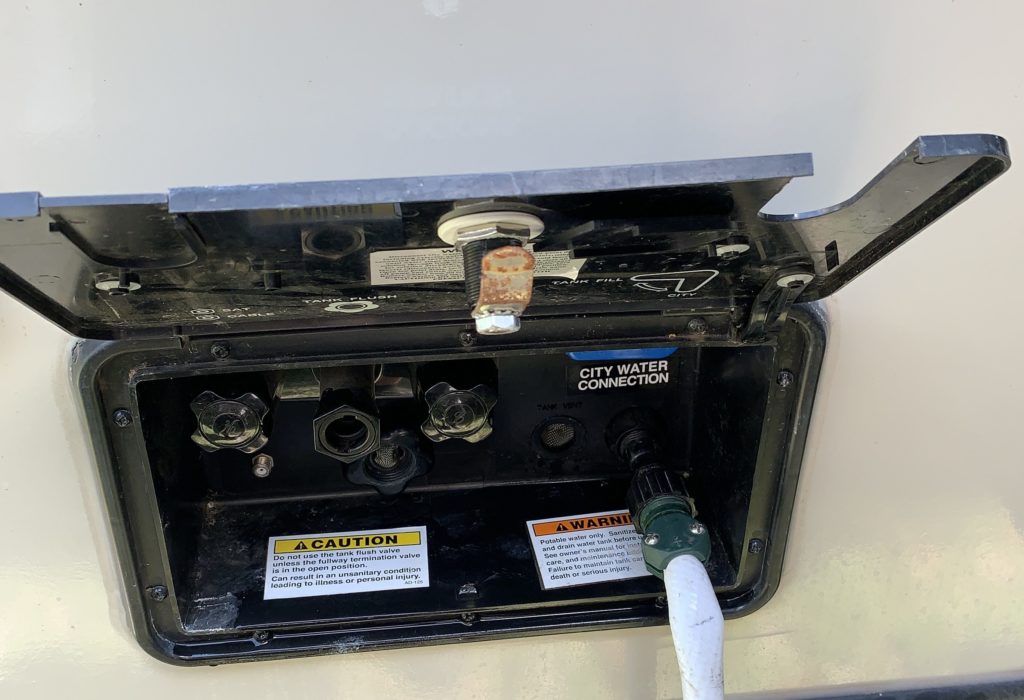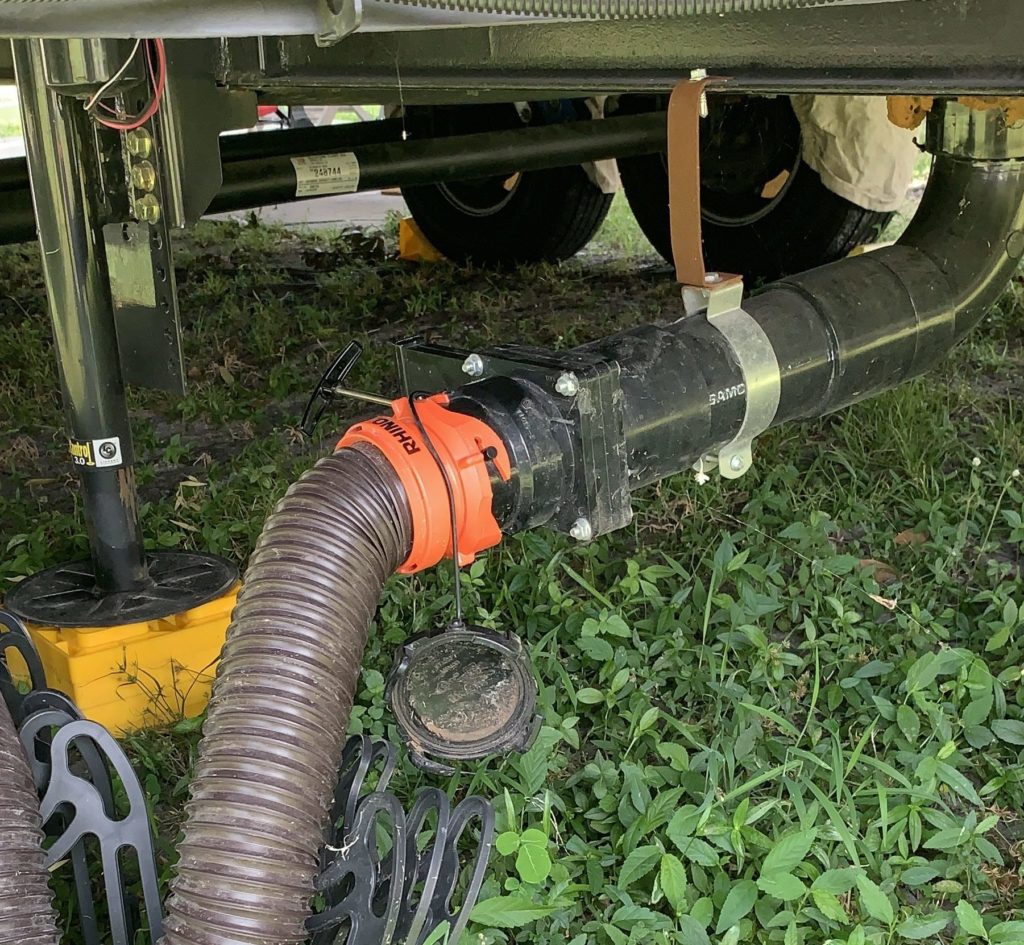A surge protector for your RV is a must, because you never know what you’re going to get when traveling from one RV park to the next. One bad surge could fry everything in your RV, or just one very expensive thing (like an air conditioner), which is more than enough inconvenience, should you be so unlucky!
We picked up the Progressive Industries SSP-50XL surge protector with the weather cover (they make 30-amp versions too), because it was reasonably priced and came highly recommended by other long-time RVers. We’ve been really happy with it– we plug it into the pole when we park, make sure the power’s good, and then plug the rig in. It’s easy and painless, and once we’re hooked up, we’ve got the peace of mind that we’re protected.
When we plugged into a new site a few weeks ago, the protector indicated that we had good power, but no surge protection. To our knowledge, we’ve never had any surge events, and the plug was still in good condition. There are two sets of LEDs for redundancy, and since both were out, we had to assume we’d lost our surge protection entirely, for whatever reason.








